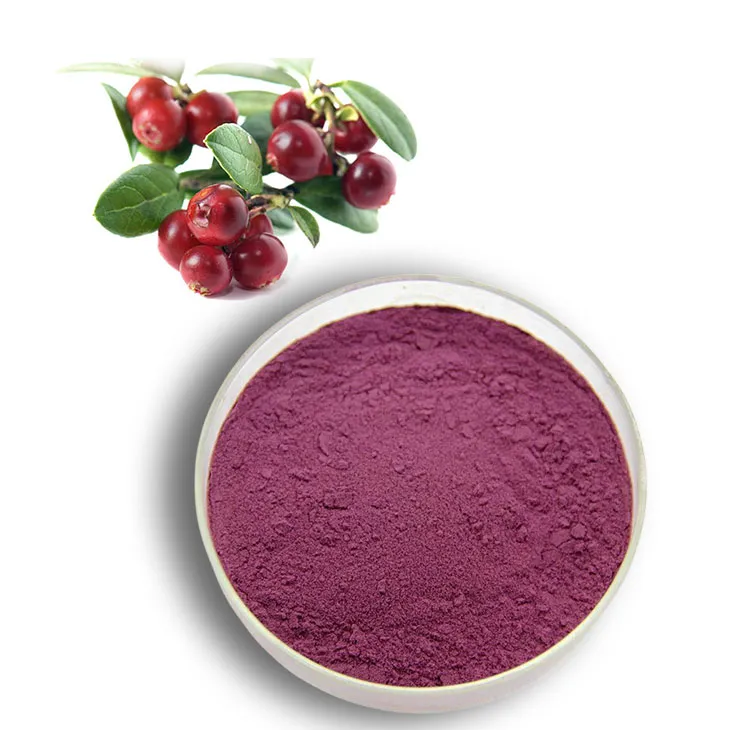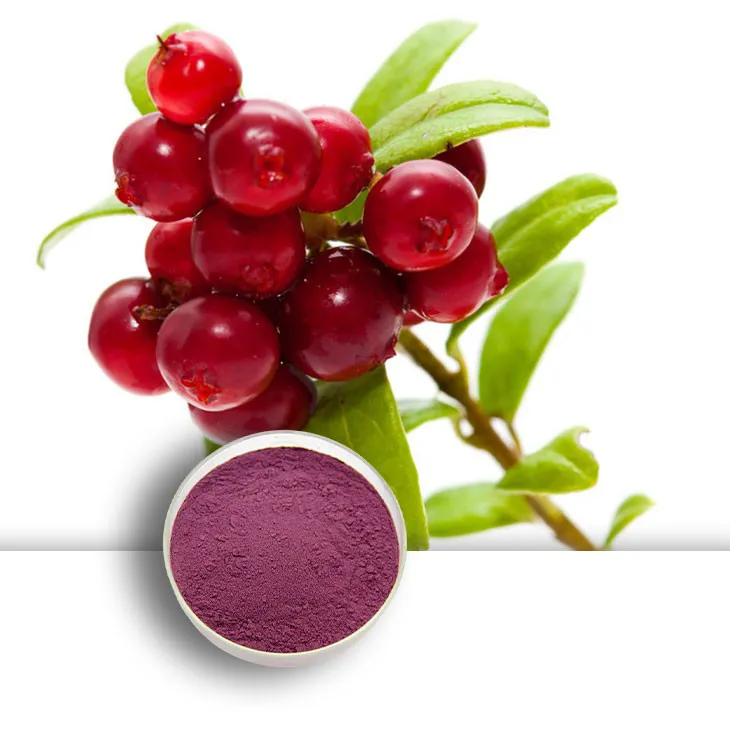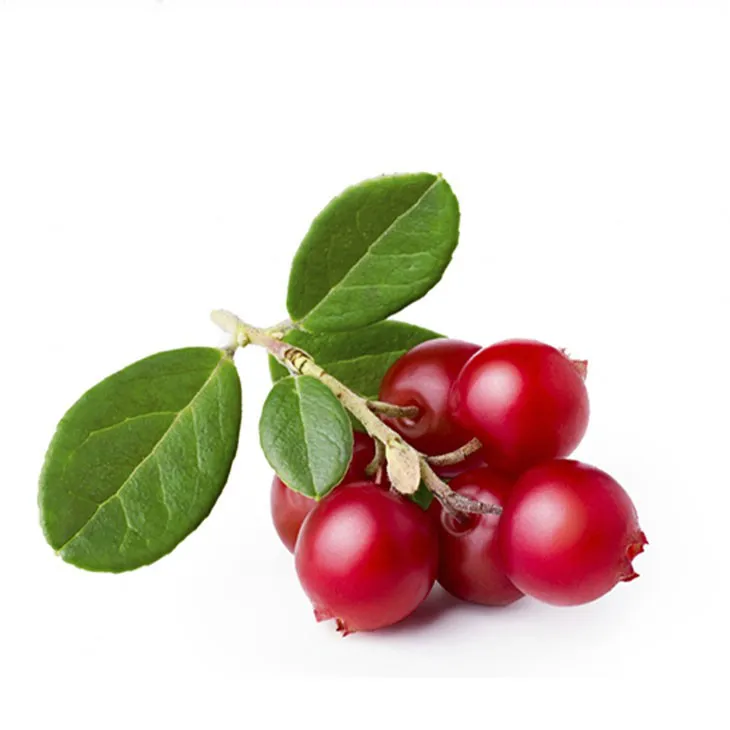- 0086-571-85302990
- sales@greenskybio.com
Supercritical Carbon Dioxide Extraction of Bilberry Extracts
2024-11-29

Introduction
Supercritical carbon dioxide extraction has emerged as a revolutionary technique in obtaining extracts from various natural sources, and Vaccinium myrtillus (bilberry) is no exception. The demand for high - quality Bilberry Extracts has been increasing in recent years, driven by their numerous health - promoting properties. Bilberries are rich in bioactive compounds such as anthocyanins, flavonoids, and other phenolic substances. These compounds are known for their antioxidant, anti - inflammatory, and anti - cancer properties, among others.

Supercritical CO₂: Properties and Principles
Supercritical carbon dioxide has unique properties that make it an ideal solvent for extraction. At specific pressure and temperature conditions, typically above its critical point (31.1 °C and 73.8 bar), CO₂ exhibits properties between those of a gas and a liquid. It has a low viscosity similar to a gas, which allows it to easily penetrate the matrix of the bilberry material. At the same time, it has a density similar to that of a liquid, enabling it to dissolve a wide range of compounds effectively.
The principle of supercritical CO₂ extraction is based on the solubility of different compounds in the supercritical fluid. By adjusting the pressure and temperature of the CO₂, the solubility of the target compounds in the bilberry can be precisely controlled. When the supercritical CO₂ is brought into contact with the bilberry material, it selectively dissolves the desired compounds, such as anthocyanins and flavonoids. Subsequently, by changing the pressure and temperature conditions, the CO₂ can be made to release the dissolved compounds, resulting in the isolation of the Bilberry Extract.

Advantages of Supercritical CO₂ Extraction for Bilberry
High Selectivity
One of the major advantages of supercritical CO₂ extraction for bilberry is its high selectivity. The extraction process can be fine - tuned to target specific compounds. For example, anthocyanins, which are the most valuable components in bilberries due to their strong antioxidant activity, can be selectively extracted with a high degree of purity. This is in contrast to some traditional extraction methods, such as solvent extraction using organic solvents like ethanol or hexane, which may extract a wide range of compounds, including unwanted ones, requiring additional purification steps.
Clean and Green Technology
Carbon dioxide is a non - toxic, non - flammable, and naturally occurring gas. It is also easily recoverable after the extraction process. This makes supercritical CO₂ extraction a clean and green technology. In the food industry, where purity and safety are of utmost importance, the absence of toxic solvents in the Bilberry Extract obtained by this method is a significant advantage. It ensures that the final product is free from harmful residues that could pose risks to human health.
Preservation of Bioactive Compounds
Supercritical CO₂ extraction is a relatively gentle process compared to some traditional extraction methods. It operates at relatively low temperatures, which helps to preserve the integrity of the bioactive compounds in bilberries. For example, anthocyanins are sensitive to high temperatures and can degrade during extraction if not carefully controlled. With supercritical CO₂ extraction, the risk of degradation of these valuable compounds is minimized, resulting in a bilberry extract with a higher content of bioactive components.

Process Parameters in Supercritical CO₂ Extraction of Bilberry
Pressure
Pressure is a crucial parameter in supercritical CO₂ extraction. Different pressure levels can significantly affect the solubility of compounds in the bilberry. Generally, increasing the pressure can increase the solubility of many compounds in the supercritical CO₂. However, too high a pressure may also lead to the extraction of unwanted compounds or cause changes in the structure of the target compounds. For bilberry extraction, an optimal pressure range needs to be determined based on the specific compounds to be extracted. For example, for anthocyanin extraction, a pressure range of [X] - [Y] bar has been found to be effective in many studies.
Temperature
Temperature also plays an important role in the supercritical CO₂ extraction process. Similar to pressure, temperature affects the solubility of compounds. However, temperature needs to be carefully controlled as it can also have an impact on the stability of the bioactive compounds. In general, higher temperatures can increase the diffusivity of the supercritical CO₂, but they may also cause the degradation of heat - sensitive compounds like anthocyanins. For bilberry extraction, a temperature range of [A] - [B] °C is often considered suitable to balance the extraction efficiency and the preservation of bioactive compounds.
Extraction Time
The extraction time is another factor that affects the quality and yield of the bilberry extract. Longer extraction times may lead to higher yields, but they may also increase the risk of degradation of the bioactive compounds. On the other hand, too short an extraction time may result in incomplete extraction. Therefore, an optimal extraction time needs to be determined. In many cases, an extraction time of [C] - [D] hours has been shown to be appropriate for obtaining high - quality bilberry extracts with a good balance between yield and bioactive compound preservation.
Applications of Bilberry Extracts Obtained by Supercritical CO₂ Extraction
Food Industry
In the food industry, bilberry extracts obtained by supercritical CO₂ extraction can be used as natural colorants and flavorings. The anthocyanins in bilberries give a vibrant purple - red color, which can be used to enhance the visual appeal of food products such as beverages, confectionery, and dairy products. Moreover, the bioactive compounds in the extract can also add health - promoting benefits to the food, such as antioxidant properties. For example, bilberry extracts can be added to functional foods or dietary supplements targeted at promoting eye health, given the well - known benefits of bilberries for vision.
Pharmaceutical Industry
The pharmaceutical industry is increasingly interested in bilberry extracts due to their potential medicinal properties. The anthocyanins and flavonoids in bilberries have been studied for their anti - inflammatory, anti - cancer, and anti - diabetic properties. Supercritical CO₂ - extracted bilberry extracts can be used as raw materials for the development of new drugs or as components in traditional medicine formulations. For example, in the treatment of eye diseases such as macular degeneration and cataracts, bilberry extracts may play a role in slowing down the progression of the diseases.
Cosmetic Industry
Bilberry extracts are also finding applications in the cosmetic industry. The antioxidant properties of the extract can help protect the skin from oxidative stress, which is one of the main causes of skin aging. Anthocyanins and flavonoids can also improve skin elasticity and reduce the appearance of wrinkles. Supercritical CO₂ - extracted bilberry extracts can be incorporated into various cosmetic products such as creams, lotions, and serums.
Challenges and Future Directions
Cost
One of the main challenges associated with supercritical CO₂ extraction is the relatively high cost compared to some traditional extraction methods. The equipment required for supercritical CO₂ extraction is complex and expensive, and the operation also requires a certain level of technical expertise. However, as the technology continues to develop and scale - up, it is expected that the cost will gradually decrease.
Optimization of Process Parameters
Although significant progress has been made in understanding the process parameters for bilberry extraction using supercritical CO₂, there is still room for further optimization. For example, more research is needed to determine the most optimal combination of pressure, temperature, and extraction time for different varieties of bilberries and different target compounds. This will help to improve the extraction efficiency and the quality of the final extract.
New Applications
Looking into the future, there is potential for exploring new applications of bilberry extracts obtained by supercritical CO₂ extraction. For example, in the field of nutraceuticals, new formulations could be developed to target specific health conditions. Additionally, in the area of environmental protection, the by - products of the bilberry extraction process could be further explored for their potential uses, such as in bio - based materials or energy production.
FAQ:
What are the main advantages of supercritical carbon dioxide extraction for bilberry extracts?
Supercritical carbon dioxide extraction for bilberry extracts has several main advantages. Firstly, it can selectively extract valuable compounds like anthocyanins, flavonoids and other bioactive components with high efficiency. Secondly, as carbon dioxide is non - toxic, non - flammable and easily recoverable, it is a clean and green technology, leaving no harmful residues in the final extract. This ensures the purity and quality of the bilberry extract and makes it suitable for applications in food, pharmaceutical and cosmetic industries.
What kind of compounds can be extracted from bilberry by supercritical carbon dioxide?
By supercritical carbon dioxide extraction, valuable compounds such as anthocyanins, flavonoids and other bioactive components can be extracted from bilberry.
Why is supercritical carbon dioxide extraction considered a clean and green technology for bilberry extraction?
Supercritical carbon dioxide extraction is considered a clean and green technology for bilberry extraction because carbon dioxide is non - toxic, non - flammable and easily recoverable. It leaves no harmful residues in the final bilberry extract.
How does supercritical carbon dioxide extraction ensure the quality of bilberry extract?
Since supercritical carbon dioxide extraction is a clean method that leaves no harmful residues in the final extract, it can ensure the purity of the bilberry extract. Also, its ability to selectively extract valuable compounds contributes to the overall quality of the extract.
What industries can the bilberry extract obtained by supercritical carbon dioxide extraction be used in?
The bilberry extract obtained by supercritical carbon dioxide extraction can be used in the food, pharmaceutical, and cosmetic industries due to its high purity and quality, and the absence of harmful residues.
Related literature
- Supercritical Fluid Extraction of Bioactive Compounds from Bilberry: A Review"
- "Advances in Supercritical Carbon Dioxide Extraction of Bilberry Phytochemicals"
- "The Application of Supercritical CO₂ in Bilberry Extract Production"
- ▶ Hesperidin
- ▶ Citrus Bioflavonoids
- ▶ Plant Extract
- ▶ lycopene
- ▶ Diosmin
- ▶ Grape seed extract
- ▶ Sea buckthorn Juice Powder
- ▶ Fruit Juice Powder
- ▶ Hops Extract
- ▶ Artichoke Extract
- ▶ Mushroom extract
- ▶ Astaxanthin
- ▶ Green Tea Extract
- ▶ Curcumin
- ▶ Horse Chestnut Extract
- ▶ Other Product
- ▶ Boswellia Serrata Extract
- ▶ Resveratrol
- ▶ Marigold Extract
- ▶ Grape Leaf Extract
- ▶ New Product
- ▶ Aminolevulinic acid
- ▶ Cranberry Extract
- ▶ Red Yeast Rice
- ▶ Red Wine Extract
-
Beta Carotene
2024-11-29
-
melatonin extract
2024-11-29
-
Cassia Seed Extract
2024-11-29
-
Astaxanthin
2024-11-29
-
Lemon Juice Powder
2024-11-29
-
Green coffee bean Extract
2024-11-29
-
Sophora Japonica Flower Extract
2024-11-29
-
Maitake Mushroom Extract
2024-11-29
-
Moringa powder
2024-11-29
-
Green Tea Extract
2024-11-29





















